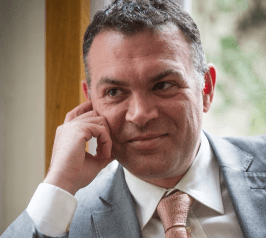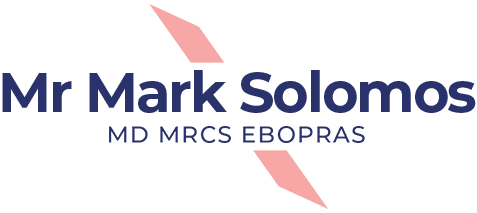Restore Your Confidence with a Natural-Looking Face Lift in London
Do you look in the mirror and feel like your reflection doesn’t quite match how youthful and energetic you feel inside?
Are sagging skin, deep lines, or a tired-looking appearance affecting your confidence?
You’re not alone — and you don’t have to settle for it. A Face Lift in London can help refresh your features, restore youthful contours, and bring back that inner glow with subtle, natural-looking results.
What Is a Face Lift?
A facelift, also known as rhytidectomy, is a surgical procedure that lifts and tightens the underlying structures of the face and neck. By removing excess skin, repositioning facial muscles, and restoring volume where it’s been lost, the procedure reverses the most visible signs of ageing — all without ever making you look “done” or unnatural.
Whether you’re concerned about jowls, deep nasolabial folds, sagging skin, or a tired jawline, a Face Lift in London with Mr. Solomos can be tailored to your specific needs and aesthetic goals.
What Can a Face Lift Help With?
- Sagging cheeks or jowls
- Deep wrinkles and folds (especially around the nose and mouth)
- Loose skin around the jawline and neck
- Volume loss in the midface
- An overall tired or aged appearance
Benefits of a Face Lift
- Smooths wrinkles and fine lines
- Tightens loose skin on the face and neck
- Restores youthful contours of the cheeks and jawline
- Boosts self-confidence with natural results
- Long-lasting improvement, not just a temporary fix

Types of Face Lift Procedures Available
A one-size-fits-all approach doesn’t apply here. There are several types of facelift procedures available, depending on the areas you’d like to improve:
Mini Face Lift
Ideal for younger patients or those with early signs of ageing. This involves smaller incisions and a shorter recovery time, focusing on the lower face and jawline.
Mid-Face Lift
Targets the area beneath the eyes and around the cheeks to lift sagging tissue and restore volume.
Full Face Lift
Addresses the entire lower face and neck through discreet incisions around the ears and hairline. This is the most comprehensive rejuvenation technique and often includes neck lifting.
Neck Lift
Removes excess fat, tightens muscles, and eliminates sagging skin under the chin for a defined, elegant neckline. May be performed alone or in combination with a full facelift.
Brow Lift or Eye Surgery Add-Ons
A brow lift addresses forehead lines and drooping brows, while eyelid surgery (blepharoplasty) can remove bags or sagging from around the eyes. These procedures are commonly combined with a facelift for a complete rejuvenation.
What to Expect from Your Face Lift in London
At your consultation with Mr. Solomos, we’ll carefully assess your goals, facial structure, skin quality, and general health to recommend the most effective surgical plan for you.
The procedure itself typically involves:
- Precise incisions placed along the hairline or around the ears to minimise visible scarring
- Accessing and repositioning deeper facial tissues (including the SMAS layer) for long-lasting, natural support.
- Removal of excess skin
- Additional volume restoration with fat grafting if needed
- Optional procedures such as a lip lift or brow lift depending on your personalised plan
You’ll go home with a refreshed version of yourself — not a different person.
Recovery: What’s the Downtime Like?
Most patients are surprised by how manageable recovery can be:
- Discomfort is usually minimal and well-controlled with prescribed medication
- Bruising and swelling peak within the first few days and steadily improve
- Most people feel confident returning to light daily activities in about two weeks
- Full results can be appreciated as swelling subsides over the following weeks
You’ll be provided with detailed aftercare instructions, and Mr. Solomos will be with you every step of the way.
Will I Still Look Like Me?
Absolutely. One of the most common concerns we hear is, “Will I look unnatural?”
The answer: No. With modern techniques and a careful, artistic approach, a facelift enhances your existing features without making you look pulled or frozen.
You’ll still look like you — just fresher, firmer, and more vibrant.
How Long Will My Results Last?
A well-performed facelift offers results that typically last 7 to 10 years, depending on your skin type, lifestyle, and genetics.
While no surgery can stop time, your face will always look younger and more refreshed than it would have without the procedure.
Maintaining a healthy lifestyle, avoiding smoking, and protecting your skin from sun damage can help prolong your results.
Why Choose Mr. Mark Solomos for Your Face Lift in London?
 Mr. Solomos is an experienced, GMC-registered Consultant Plastic Surgeon who has helped countless patients achieve natural, age-defying results through facelift surgery. He takes the time to listen to your concerns, understand your goals, and build a bespoke treatment plan tailored to you.
Mr. Solomos is an experienced, GMC-registered Consultant Plastic Surgeon who has helped countless patients achieve natural, age-defying results through facelift surgery. He takes the time to listen to your concerns, understand your goals, and build a bespoke treatment plan tailored to you.
Credentials:
- General Medical Council’s Specialist Register in Plastic Surgery
- Fellow of the European Board of Plastic Reconstructive and Aesthetic Surgeons
- Royal College of Surgeons of Glasgow
Mr. Solomos operates from trusted private hospitals in London, including Highgate Private Hospital and Cadogan Clinic in Chelsea.
Ready to Rejuvenate?
If you’re ready to explore how a Face Lift in London can help restore your confidence and refresh your appearance, we’re here to guide you.
Book a consultation with Mr. Solomos today and take the first step toward a naturally youthful, radiant look.
Book A Consultation
FAQs About Face Lift Surgery
Is a facelift painful?
Most patients experience only mild discomfort, which is easily managed with medication. You’ll feel tightness or mild swelling, but not significant pain.
Will there be scarring?
All surgeries involve incisions, but we place them discreetly within natural folds or hairlines to minimise visibility. Over time, scars fade significantly.
Can I combine a facelift with other procedures?
Yes! Many patients choose to combine a facelift with a neck lift, brow lift, eyelid surgery, or even fat grafting for comprehensive facial rejuvenation.
Am I too young (or too old) for a facelift?
There’s no set age — it’s more about your facial anatomy and skin quality. Patients typically range from their 40s to 70s.
How long is the recovery?
Most people return to normal activities within 10–14 days, with more visible results developing over the following month. Full healing may take several months.
Let Mr. Solomos help you rediscover a younger version of yourself — with subtlety, precision, and compassion.




